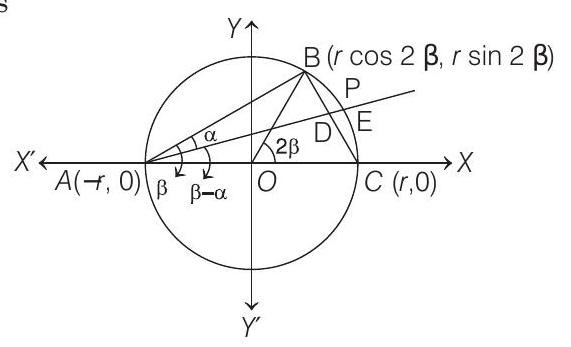Circle 1 Question 19
19. A circle passes through three points
Show Answer
Solution:
- Let the radius of the circle be
Now,
Therefore, coordinates of
And slope of
Let

Now, equation of
To obtain the coordinate of
On putting this value in Eq. (ii), we get
Therefore, coordinates of
Thus, coordinates of
Since,
Therefore, area of the circle






